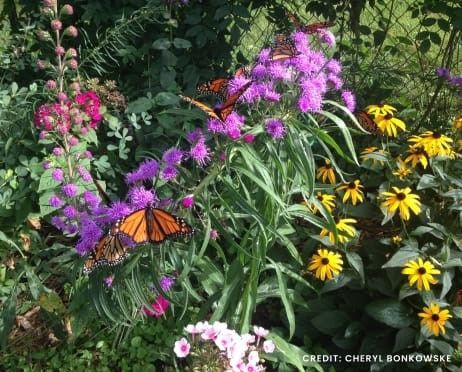May is Gardening for Wildlife Month – Plant with Purpose!

Photo by Cheryl Bonkowske
The National Wildlife Federation began a program called Gardening for Wildlife in 1973, the same year that the Endangered Species Act was signed into law by President Nixon. The main focus of the program is getting people to revere the relationship that plants and wildlife in their particular area have. The program aims to entice people to create more wildlife-friendly spaces by planting species that local wildlife will benefit from. Urban sprawl has caused encroachment on wildlife habitat leaving them with fewer and fewer opportunities to be successful. Gardening for Wildlife month is aimed at increasing wildlife habitat options by creating an appealing space in your yard for both you and your neighboring wildlife.
The Wildlife Federation found that private residences comprised nearly one third of urban landscapes in developed nations causing available habitat for wildlife species to dwindle. The program showed that even small gardens can make a difference to their wild neighbors, often providing an important link to larger habitat areas.
Your yard might not be habitat for the Giant Garter Snake or the Peninsular Big Horn Sheep, but it’s easy to provide habitat for migrating cedar wax wings or a nursery for monarch butterflies. And, no need to hire a landscaper to redesign your yard, it all begins with what you plant. To make your yard more friendly for wildlife, plant a variety of chemical-free flowering plants and shrubs. Trees provide habitat for different species of birds (and other wildlife), often those species vary as the size of the tree increases and even dead wood is habitat for wildlife. If you have the space, creating a little water feature provides an oasis for neighborhood frogs, birds and squirrels to sip from. Introducing many different species of flowering plants can provide a sanctuary for nectar loving species such as bees, moths, butterflies and hummingbirds. Did you know you might find thousands of species of insects in your yard at any given time? Most of them are harmless to you and provide food for other species. One garden, even a small one, can provide hundreds of ecosystems and a lovely space for you!
-Kristie Ehrhardt; kehrhardt@tuleyome.org
Tuleyome Land Conservation Program Manager
RECENT ARTICLES






